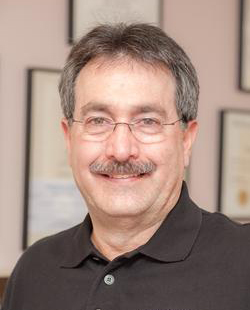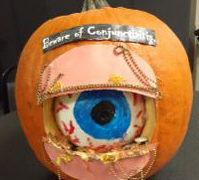By Robert L. Bass, OD, FAAO
Sept. 21, 2016
SYNOPSIS
Patients tend to allocate an hour for a visit. Go long on your exam, and there’s no time for the optical. Engineer staff work flow to keep patients moving and purchasing.
ACTION POINTS
SET ROLES &CROSS-TRAIN. Train and make employees aware of their primary responsibilities, but also cross-train so they can pitch in asneeded.
TRACK TIME. Keep patient’s visit to under one hour, so they have time to shop in the optical.
DOCTOR REFRACTS & INTERPRETS DATA. Utilizepre-testing results to concentrate on the interpretation of eye health data.
My practice has a carefully thought-out work flow, or system, for moving patients through our office. This system was designed to serve our patients as best as we can, while driving efficiency and profitability. Work with your staff to create a work flow that makes sense for both you and them, and ensures patients leave your office feeling that they had an experience they could recommend to others.
An expedited flow through the office has an enormous financial payoff in better staff allocation, and more time spent in the dispensary by the patient–and more optical sales.
Set Well-Defined Roles
In our office, we each know exactly the primary duties each of us is responsible for, while each support staff member has also received cross-training to fill in as needed in other areas of the practice.
Optician: Primary job is working with patients in the optical and selling eyewear, but can also pre-test and use all special equipment.
Insurance specialist: Processes patient insurance and also has been cross-trained to work at the reception desk, conduct pre-testing and use special equipment.
First Receptionist: Primary job is to greet patients and go through the check-in process with them, ensuring all needed forms have been filled out either online or in the office, and getting any other needed information from patients. But also is cross-trained to pre-test, work in the optical, take anterior and posterior photos and train contact lens wears.
Second Receptionist: Does accounts payable, and acts as an ombudsman, handling any headaches in the daily operation, such as patients who need to reschedule at the last minute, and is the first-line response to patients with disagreements over completed eyewear or insurance coverage.
Optometric Practice Manager (My wife): Posts insurance checks, (never have the same person who processes insurance post the checks!), does billing, works in the optical, trains contact lens wearers, (and tried to get fired for 35 years, married 38 years).
Set Organized Steps Each Patient Goes Through
Patients, who come to our office for a comprehensive exam, go through the following routine steps. This is all completed in 40 minutes, or less, so patients have at least 20 minutes to shop in the optical.
Reception:Two staff members at the front desk, when a patient walks in, the first one not on the phone greets the patient and asks how they can help them. That staff person will take next steps to guide the patient where they need to be. The receptionist gathers their ID and insurance card and sees if the patient has updated their medical history online; if not, she hands the patient the paperwork to fill out. Time: 8 minutes.
Pre-Testing: Next to the pre-testing area for testing and the exam room for health and lifestyle history-taking. Time: 8 minutes
Exam Room: I re-ask the patient what brought them in that day, as I am taking 20-30 seconds to review their health record on my iPad in the exam room. Time: 5 minutes
Refraction: I conduct refraction in the exam room, put in drops for dilation and hand off to the optical, where the patient browses eyewear and the optician reviews my prescriptions for eyewear with the patient and helps them pick out frames. Time: 5 minutes
Patient Returns to Exam Room: I do a medical eyecare exam, and have a conversation about the patient’s eye health, and hand-off back to the optical or front desk to finish the eyewear selection and check-out process. Time: 10 minutes
Patients visiting for an eyecare emergency go through the same process, but a note has been added to their name in the schedule and in their health record that their visit is an emergency, and that they should be seen as promptly as possible.
If an insurance question or billing question arises, the greeting staff person will walk them to the insurance/billing area.
If a patient, or anyone, comes in just to browse eyewear, or with a complaint or need related to their eyewear, the greeting staff will page the optician if not in sight and have the patient take a seat in the optical area.
Keep Aware of Patient’s Overall Time in the Office
We know the importance of keeping the patient’s overall time in the office to under one hour, so we strive to have patients in our office for no more than 15-45 minutes, depending on the type of visit.
I can see 16-25 patients per day depending on the needs of the patients who visit on any given day. For instance, while some days may be comprised mostly of standard comprehensive exams, other days may also include unexpected emergency visits, or difficult specialty contact lens fittings, or patients with serious eye diseases that need to be carefully evaluated and discussed.
Evaluate Efficiency & Make Changes When Necessary
My office is small, so I try to work with as few bodies as possible.We have had two people at front desk for 15 years, and a separate insurance person for 10. Having just three staff members as the primary employees in the office was made easier five years ago with the introduction of enhanced computer software and better pre-testing equipment. The efficiency of my current staff, and the technology we have invested in over the last five years, has enabled me to see 4-5 more patients than I could before that time, and all the while staying on time.
Doctor Concentrates on Interpretation of Data
I still refract patients myself, and speak to patients about their needed prescriptions for eyewear. But a key role of the OD in a practice that has strong medical eyecare services is to interpret the eye health data taken earlier in the patient’s visit by support staff. First, my staff pre-tests the patient and inputs all information into the computer, and explains all the tests to the patient. When I walk into the exam room with their health record open on my iPad, I can see on the overview page: the reason the patient is here; the need to present glasses with visual acuities, auto-refraction results and tonometry. It then usually just takes me 10-20 seconds to refract, and then I’m ready to devote the bulk of the patient’s time in the exam room to their medical eyecare exam.I feel I must give my patients the results of my examination. Good or bad, it always comes from me.
I feel my job as an optometrist is to be the best refractionist there is and give my patients the best medical care there is, therefore I do not delegate those procedures. That said, my staff performs auto-refractions, K-readings, IOP readings, retinal photos, visual fields, GDX/OCT testing, contact lens training-care and I & R and optician/optical technical work.
I fully dilate with phenylephrine 2.5%/ tropicamide 0.5 or 1.0% or hydroxyamphetamine hydrobromide 1.0%/ tropicamide 0.25%. This gives me the best view to protect my patient’s health and to protect myself in case of a law suit. I feel that if I only use a photo, or only partially dilate, some expert will state that if I had fully dilated, a problem may have been avoided.
I spend five minutes with each patient in the exam room. I am a talker and I do get “a little” behind talking about kids, sports, hobbies and adventures. You must talk to patients about the results of their examination, about new products and about what this office can do to support visual welfare. If after this is explained and family talk is taking too long, I just stand up. This usually works to move out of the room for more testing, to move the optical or to the front desk to pay. This time is what attaches the patient to you and your office. You must listen and explain.
Be Thorough & Caring, But Stay on Time
If it is a new patient, and you haven’t been alerted ahead of time that it’s a new patient, you will get behind. So, you must have your staff ready to tell the next appointments upfront that the doctor is a few minutes behind and be truthful about how many minutes. Then, your staff and you must shave a few minutes from other office visits to work back toward normalcy. I hate to be behind, so my office is ready if I am.
Also, when a patient is new, my staff will warn me from their pre-testing encounter that this patient may need some extra time and cause me to be late. The same tech will alert the rest of the staff to be ready to “save” time. Saving time or shaving minutes in the exam room comes from my talk about family and adventures, and not from my due diligence in my examination.
If it is a previous patient age under 6, or above 75, we schedule accordingly from previous knowledge. “Previous Knowledge” is recorded, not just going from memory, in the patient’s notes in the billing area of the patient’s health record that is never printed out.
When scheduling an appointment, we also check their previous paying methods and insurance in the billing area. Doing that ahead of time, is another way to save time and keep the patient visit smooth.
Robert L. Bass, OD, FAAO, is the owner of Optometric Associates, PC, in Manassas, Va. To contact: idr.bass@verizon.net



























